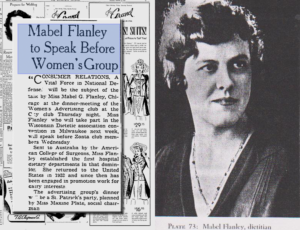
How to Reach Special Publics – The Woman Publics
Late last year I received an email from Dr. Beverley Wood in Victoria, Australia about Mabel Gertrude Flanley in respect of reference to Mabel in a comment I’d made on a blog post in May 2014. Beverley was researching Mabel for an historical presentation at the Annual Conference of the Dietitians Association of Australia in May, and had a gap in her knowledge after Mabel’s return to the US in 1932. Beverley told me “There...
